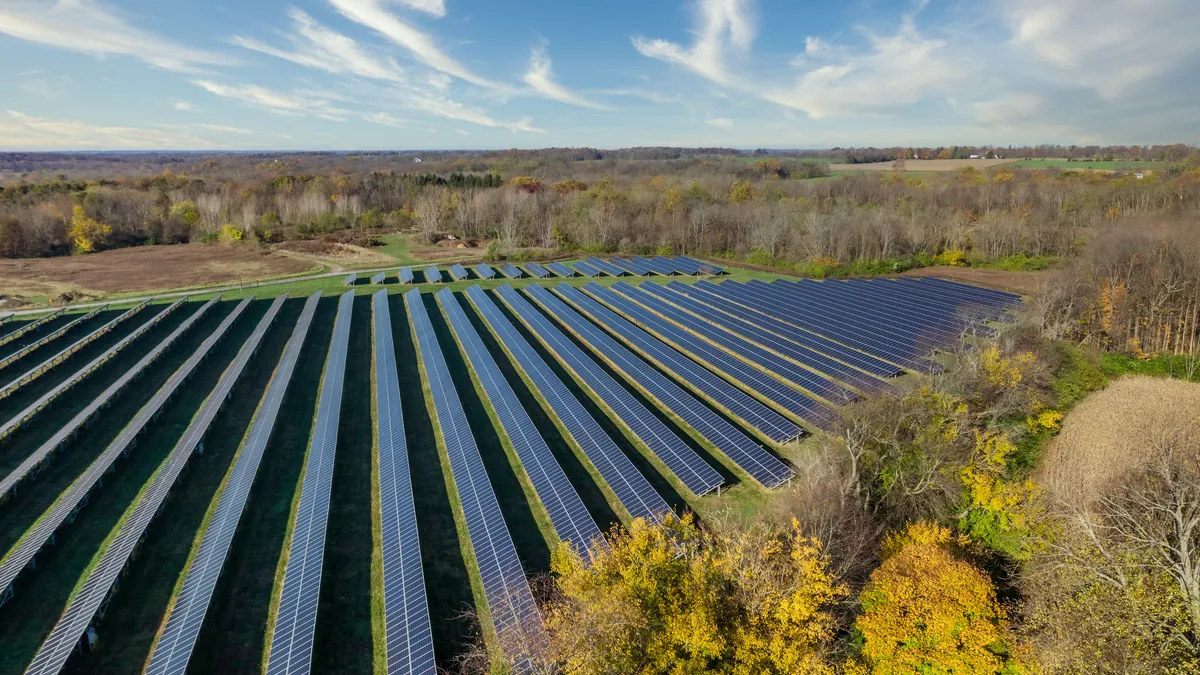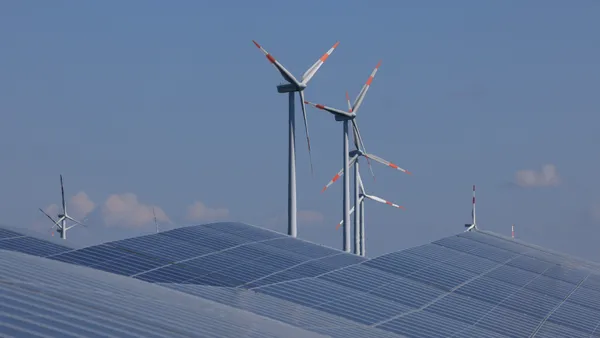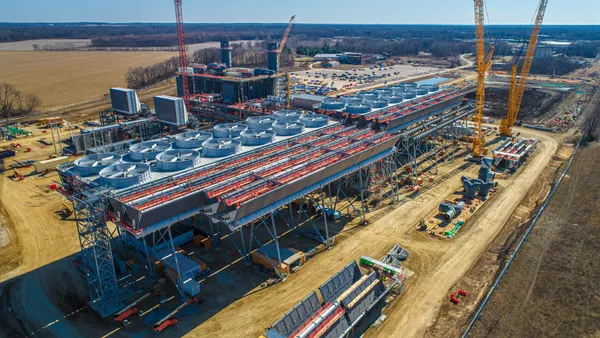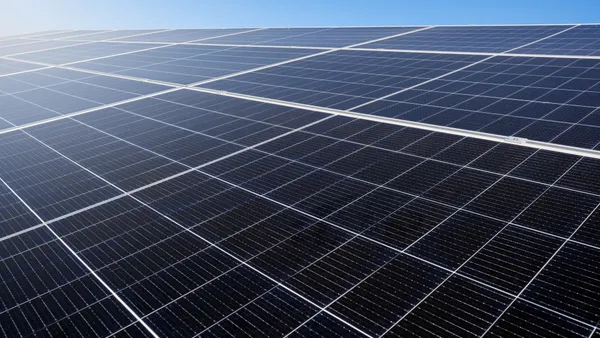Dive Brief:
-
In a step towards removing a major barrier to renewable energy development in the PJM Interconnection, one of the grid operator's stakeholder committees this week endorsed a plan to transition to a reformed generation interconnection study process that aims to get projects reviewed more quickly.
-
The transition plan, approved Feb. 8 with 91% support from the Planning Committee, includes a two-year freeze on new interconnection applications to give the grid operator's staff time to finish studying a backlog of existing applications.
-
PJM expects it will file in May an interconnection reform proposal for review by the Federal Energy Regulatory Commission, pending approval from two more of its stakeholder committees. The reform plan could take effect Oct. 1, if approved.
Dive Insight:
"We are going to see a better, faster, more efficient way to integrate projects into the system and enable states to meet their renewable portfolio goals," Ken Seiler, PJM vice president of planning, said during the committee meeting, according to the grid operator. "It's going to help us long term to prepare for the grid of the future."
The committee's approval of the transition plan comes about a month after it endorsed changes to PJM's interconnection review process that aim to make it go more quickly, partly by limiting speculative projects through financial requirements and by requiring applicants to show they control the site where they intend to build their facility. PJM expects interconnection applications could be completed in less than two years under the revised process.
PJM anticipates it will begin to review new applications under its revised process in late 2025.
Like other grid operators, PJM has been looking at ways to reform its process for studying what upgrades are needed to safely allow proposed generating projects to connect to the grid. Typically, proposed projects must complete the interconnection process before their developers can get financing to build them.
Across the United States, grid operators' interconnection reviews have slowed amid a wave of wind, solar and energy storage development.
In PJM, which covers 13 Mid-Atlantic and Midwest states, plus the District of Columbia, there were 288,609 MW in the interconnection queue at the end of December, according to data released Thursday by Advanced Energy Economy, a trade group with members like Amazon, LS Power and SunRun.
Those projects include 136,293 MW of solar, 74,498 MW of energy storage, 34,152 MW of hybrid projects that combine storage and renewables, 25,336 MW of onshore wind and 18,330 MW of offshore wind.
About a third of the projects in PJM's backlog have been in the interconnection queue for more than 500 days and 166 of them have been in the queue for more than three years, according to AEE.
Under PJM's proposal, the grid operator's staff will continue working on pending interconnection applications through September using its current rules, according to a Feb. 8 presentation to the Planning Committee.
The grid operator expects about 450 pending projects will meet criteria for being studied in a "fast lane" track, with those projects finishing their review by October 2024. PJM intends to clear out the remaining interconnection applications using two "transition" review cycles, with the first finishing by mid-2025 and the second wrapping up a year later.
"While not a panacea, the new interconnection process that PJM will put in place is an improvement over the current process and was overwhelmingly supported by PJM stakeholders," Jeff Dennis, AEE managing director and general counsel, said in an email Thursday.
The proposed pause in accepting interconnection applications is a sign of the severity of the backlog in PJM's interconnection queue, according to Dennis.
"It's important to keep in mind that PJM says it will use that time to start unlocking the queue by moving delayed projects that are ready to go forward much faster," Dennis said, noting the projects are almost all wind, solar and energy storage.















